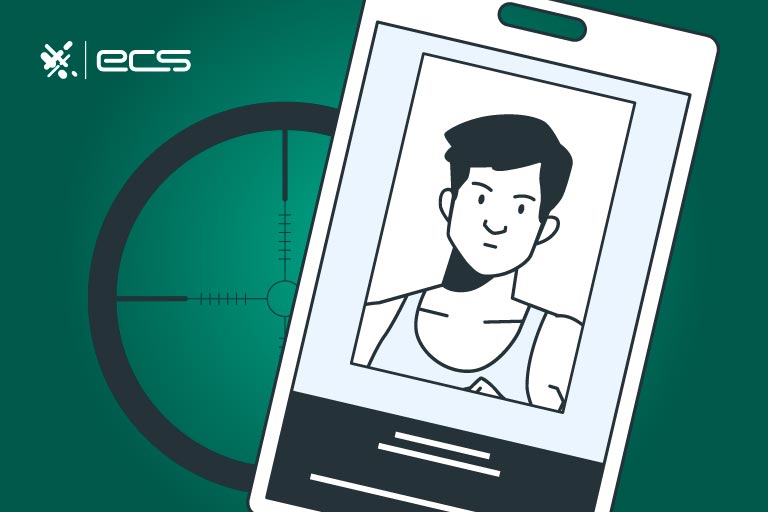If you deal in the firearms, industry you must obtain a Federal Firearms License. This article is designed to overview Federal Firearm Licensees, how to get a FFL license, FFL license types, and all the nuances you must be aware of and prepared for in your firearms journey. Let’s get stated.
FFL Meaning
First off, what is a FFL? FFL stands for Federal Firearms License. Any gun store, person, or entity (e.g., an LLC or corporation) manufacturing, dealing in, or importing firearms and ammo must be licensed by the Bureau of Alcohol, Tobacco & Firearms (ATF). This license is a Federal Firearms License or FFL.
While those three things sound like a riotous good time (especially when paired up with state gambling commissions), the ATF is actually not about smoking, drinking, and shooting but rather about regulating the manufacture, sale, and importation of those three things.
For better or worse, one of their requirements is that individuals or businesses engaged in making, selling, repairing, or importing guns and ammo will fill out an FFL application, pay their application fees, and abide by the Gun Control Act and the National Firearms Act.
Managing the sale and tracking of firearms requires specialized tools, and that’s where gun store POS software comes into play. Whether you’re selling, repairing, or importing guns and ammo, staying compliant with the Gun Control Act and the National Firearms Act is a breeze when you’ve got the right software at your fingertips.
The Gun Control Act
The Gun Control Act of 1968 was signed into law by President LBJ (not to be confused with a current public servant bearing a slightly similar three-letter epithet). The GCA was noteworthy because it began to place limitations on one of the fundamental rights of American Citizens: the right to own and bear arms. Certain individuals were now prevented from purchasing firearms, and it became illegal to sell to these individuals.
Indicted criminals, fugitives from justice, unlawful abusers of a federally controlled substance, those adjudicated as mentally defective or committed to a mental health facility, illegal aliens, dishonorably discharged veterans, renounced citizens, and those under a restraining order were just a few of the individuals that could no longer buy firearms, legally.
Common sense and a sense of community responsibility would preclude most business owners from selling to most of the above such individuals but never say never. And while the government does not compel bars or casinos to run background checks on those who want to drink or gamble, they do ask businesses to run them on customers seeking firearms.
Whether or not that cuts down on crime is a debate best brought up at the Thanksgiving dinner table and not in this article (helpful hint: time the debate so that the tryptophan from the turkey kicks in right as things get heated). We would like to focus on federal firearms license compliance and how to apply for a federal firearm license.
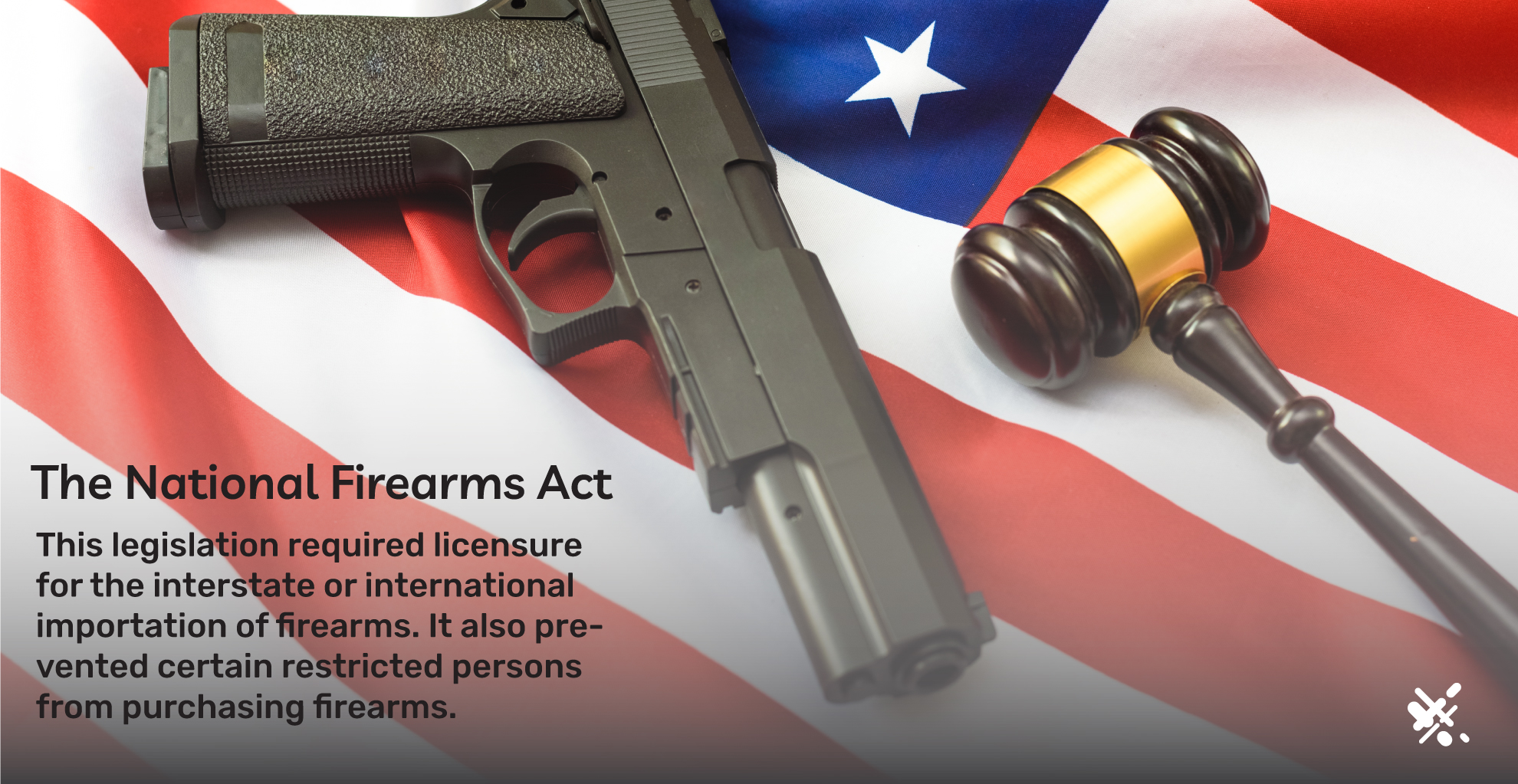
The National Firearms Act
But first, a little more explanation about where the Federal Firearms License comes from. There were several precursors to the GCA, including the National Firearms Act or NFA. The NFA, or Title II (as it is also called), was signed into law in 1934.
It created categories of firearms that would subsequently be regulated by the federal government, including machine guns, short-barreled rifles (SBRs), short-barreled shotguns (SBSs), suppressors or silencers, and destructive devices—grenades, bombs, missiles, poison gas, and guns with a bore over 0.50 inches.
The impetus for the NFA came from rampant gang-related crime during the Prohibition Era, like the Valentine’s Day Massacre. All ownership transfers (e.g., sales) of these NFA guns and accessories must be reported to the ATF through the National Firearms Registration and Transfer Record.
The ownership of these weapons is also subject to a $200 stamp tax. Back then, $200 was quite cost-prohibitive (and that was the idea). Today, this stamp tax would equate to $4,375 when adjusted for inflation. But thankfully, the ATF has not changed the price. If they did, the stamp tax would certainly once again become cost-prohibitive.
Another important piece of legislation was the Federal Firearms Act (FFA) of 1938. This legislation required licensure for the interstate or international importation of firearms. It also prevented certain restricted persons from purchasing firearms.
Unfortunately, they forgot to include a provision that prevented “restricted persons” from using alternate identities. Coupled with the fact that background checks did not exist yet, the legislation was largely ineffective until it was re-structured in the Gun Control Act.
The Brady Act and the NICS
In 1993, The CGA was amended by the Brady Handgun Violence Prevention Act. The Brady Act mandated federal background checks on firearms purchases and a 5-day waiting period. With the advent of the National Instant Criminal Background Check System (NICS) in 1998, this 5-day (federally mandated) waiting period disappeared. If you’re wondering, the NICS is not maintained by the ATF but by the FBI, the sponsor of “acceptable Tweets” everywhere.
So, as you can see, having a Federal Firearms License is meant to enforce the various legislation (FFA, NFA, CGA, and Brady Act). Take note that state laws about buying and selling guns vary. In some states, private individuals can buy and sell guns from one another (as long as they are not violating other state and/or federal laws). However, anybody dealing in guns as a business in any state needs an FFL license.
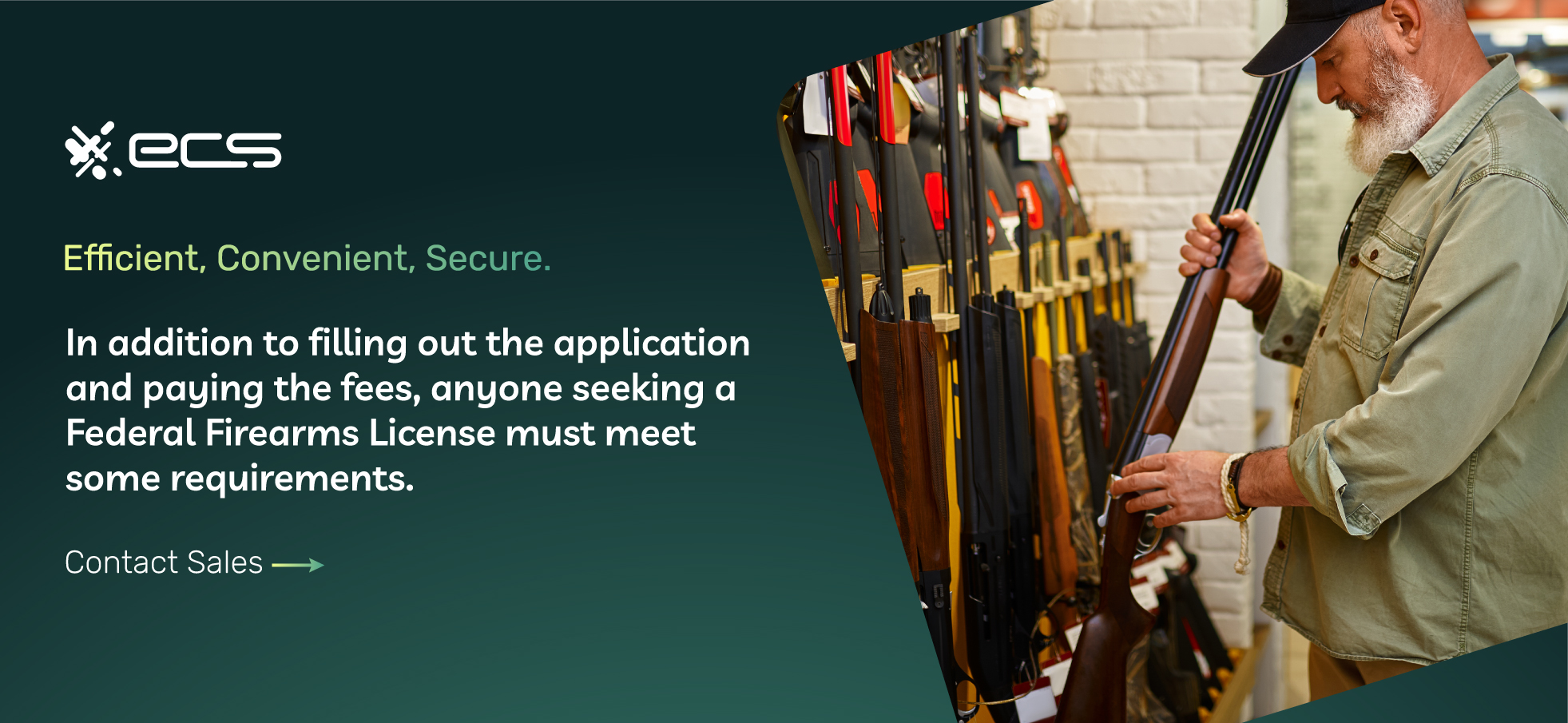
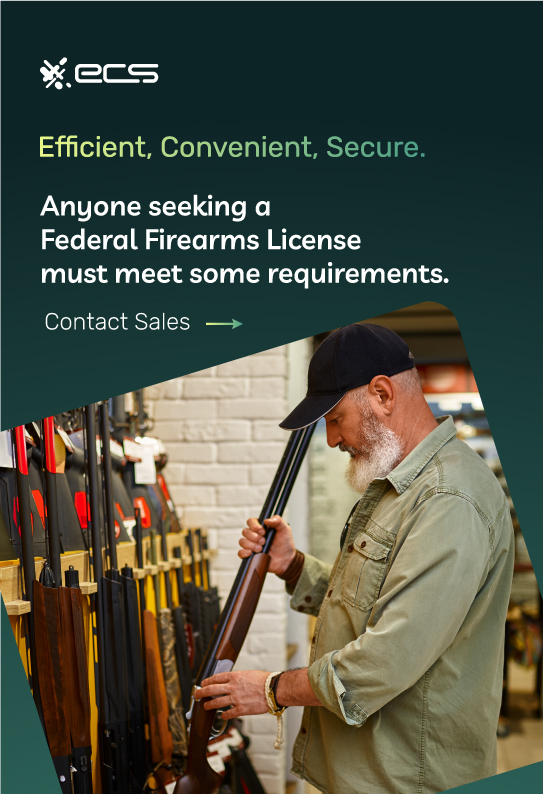
How To Get A FFL License
In addition to filling out the FFL license application and paying the FFL license fees (outlined below), anyone seeking a Federal Firearms License must meet some requirements. Or rather, these parameters necessitate obtaining an FFL license.
Someone who needs an FFL is buying and selling guns for commercial purposes…e.g., business profit. This type of business is much different than selling a handgun at a garage sale (although there might be state laws about that in your state). This person will also have some semblance of a storefront from which they are dealing in firearms, such as an official point-of-sale check out area with gun store POS software.
Here are some Federal Firearms License requirements a potential FFL retailer or gun store must meet. You must:
- be 21 years of age
- be a U.S. citizen
- have no history of felony convictions, illegal drugs (including federally illegal marijuana, such as possession in a state where it’s not legal yet), or domestic violence.
- have no formal diagnoses of mental incompetence
- have no history of any federal gun violations,
- meet any state-specific requirements
You must also certify that:
- the chief law enforcement officer for your jurisdiction has been notified of your intentions.
- adequate and secure gun storage is on site.
- your business meets state and local regulations and no transactions are processed until all requirements are met.
- within 30 days of approval, you will have met all state and locally required codes of conduct.
What Is An SOT?
Let’s say you make or sell silencers, machine guns, grenades, missiles, or any other NFA gun (e.g., those requiring special ATF registration, as discussed above). You will need to register as a Special Occupational Taxpayer (SOT).
There are three types of SOT: importer of NFA firearms, manufacturer of NFA firearms, and dealer of NFA firearms. The SOT registration costs between $500 and $1,000 based on the size of your business revenue and the type of SOT you are seeking.
Note that SOT registration does not go by the calendar year but runs from July 1 to June 30. Time your registration accordingly, as registering in May or June is not particularly a great investment.
While having a SOT sounds like somewhat of a specialty, especially for those who don’t plan on selling machine guns or hand grenades, keep in mind that many of the most popular guns out there are short-barrel rifles, such as the AR-15.
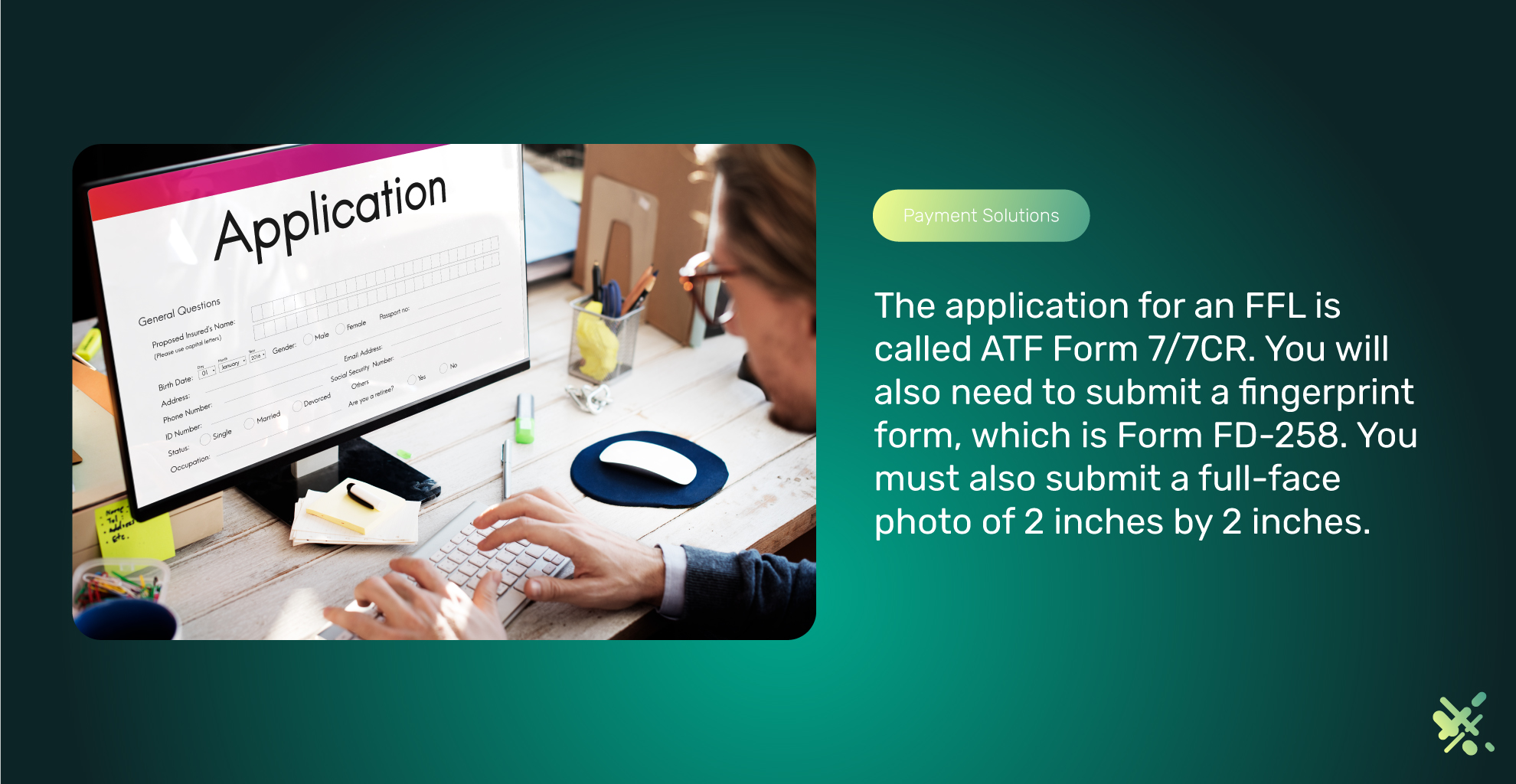
What Does the Federal Firearms License Process Look Like?
The application for an FFL license is called ATF Form 7/7CR. You will also need to submit a fingerprint form, which is Form FD-258. You must also submit a full-face photo of 2 inches by 2 inches. The photo must be current, within the past six months.
You can find the form right on the ATF website. Still, software companies can facilitate your application through their platform and provide legal compliance assistance (such as FastBound).
Either way (whether you mail it in yourself or use a third party), once the ATF receives your application, they will assign you an industry operations investor (IOIS) through your local ATF branch. The IOIS will conduct an in-person interview, during which the legal requirements of an FFL will also be discussed.
The Industry Operations Investor
The IOIS will be the one to approve or deny your application, so come prepared. Your gun store will also be inspected. You will want to show your professionalism and dedication to following local business ordinances by procuring the right licensure or at least showing you are in the process of doing so (e.g., creating articles of incorporation if you are going to operate as an S-corp, having insurance policies ready to go, etc.).
How Long Does It Take To Get An FFL?
Ok, so how long does it take to get an FFL? It will take 30-60 days for the ATF to approve or reject your FFL license application. There may be some additional fees you need to pay and licensures you need to secure. For instance, there are steep excise taxes of about 10% on every firearm manufactured over 50.
Another example is the ITAR/DDTC. Suppose the State Department finds you to be a gun manufacturer of products listed in the United States Munitions List. In that case, you must register with the Directorate of Defense Trade Controls subject to the International Traffic in Arms Regulations (hence ITAR/DDTC). The registration for this costs $2,250 annually. If your gun business is not manufacturing military-grade weaponry, this will not apply to you.
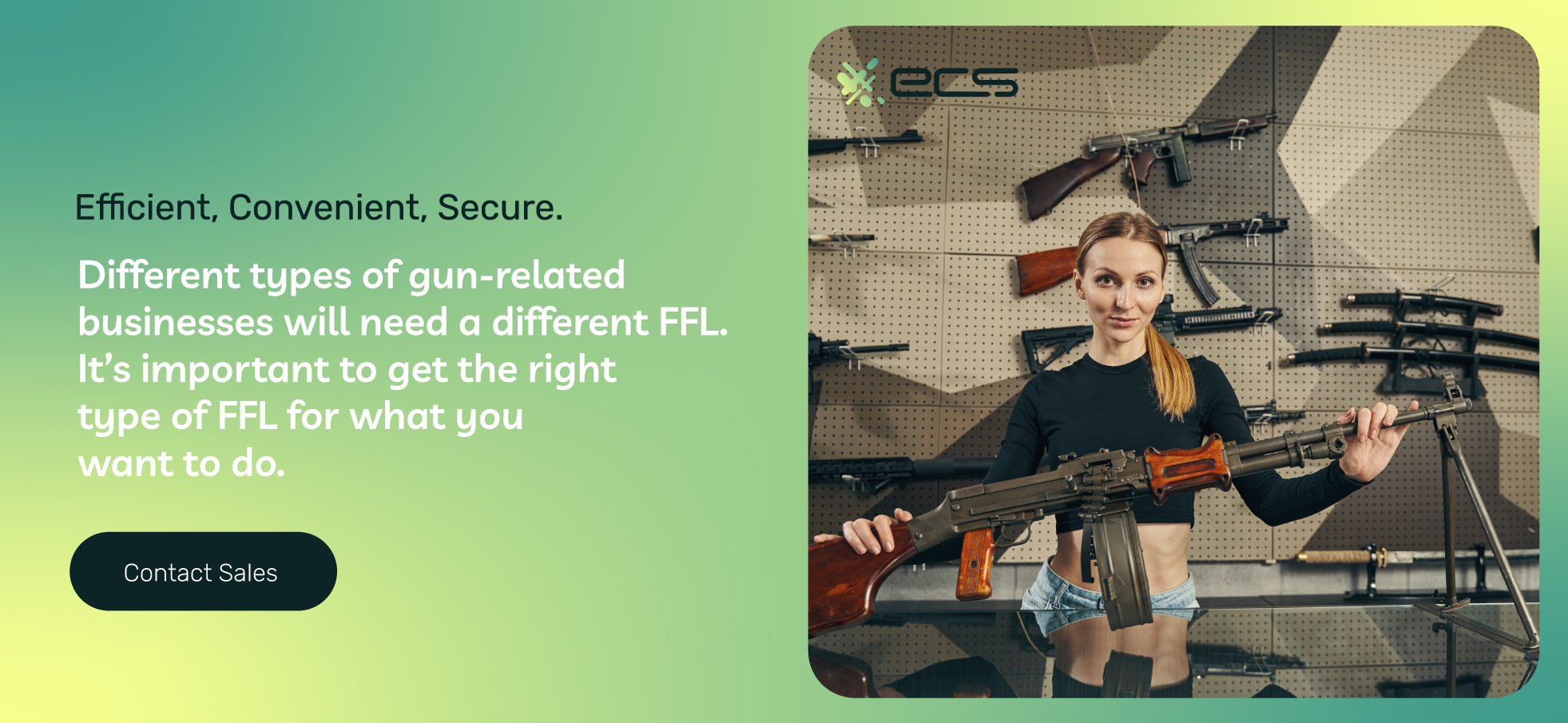
Different Types of Federal Firearms Licenses
There is no one-size-fits-all for an FFL. Different types of gun-related businesses will need a different FFL. Before getting into the particulars of the different federal firearms license types, keep in mind that not all firearms require an FFL. For example, dealing in antique guns made before 1898 and muzzleloaders usually do not require an FFL.
But for many things gun-related, you will need an FFL if you want to do business. It’s important to get the right type of FFL for what you want to do. Buying and selling antique guns (those needing an FFL) does not require the same type of licensure needed by a gunsmith specializing in applying customized cerakote to gun handles.
In the main, there are three types of FFL licensees: manufacturers, dealers, and importers. Repair work is categorized alongside dealerships (usually with an FFL type 1). Let’s take a look at the different federal firearms license meanings.
Dealer in Firearms and/or Gunsmith
A type 1 FFL is for a firearms dealer or gunsmith. This type of FFL covers basic transactions and most repairs. For gunsmiths, this might be the only type of license they’ll ever need. The same applies to those who want to buy and sell non-NFA firearms (e.g., handguns, rifles, and shotguns).
Pawnbrokers
There are limitations to the type 1 FFL. With a type 1 FFL, you cannot manufacture guns for sale, including assembling guns from kits. There are also some limitations on selling certain items like silencers. The cost of a type 1 FFL is $200 and costs $90 every three years to renew.
Pawnbrokers need a type 2 FFL. This type of licensure differs from type 1 because pawnbrokers take guns as a security against a loan. However, in other aspects, it is very much the same.
Another noteworthy difference from other licenses is that type 2 FFLs may be subjected to ATF inspections more frequently. This is due to the nature of pawnbrokers’ business (e.g., at risk of borrowers using stolen security). Like the FFL type 1, an FFL type 2 costs $200 and $90 every three years to renew.
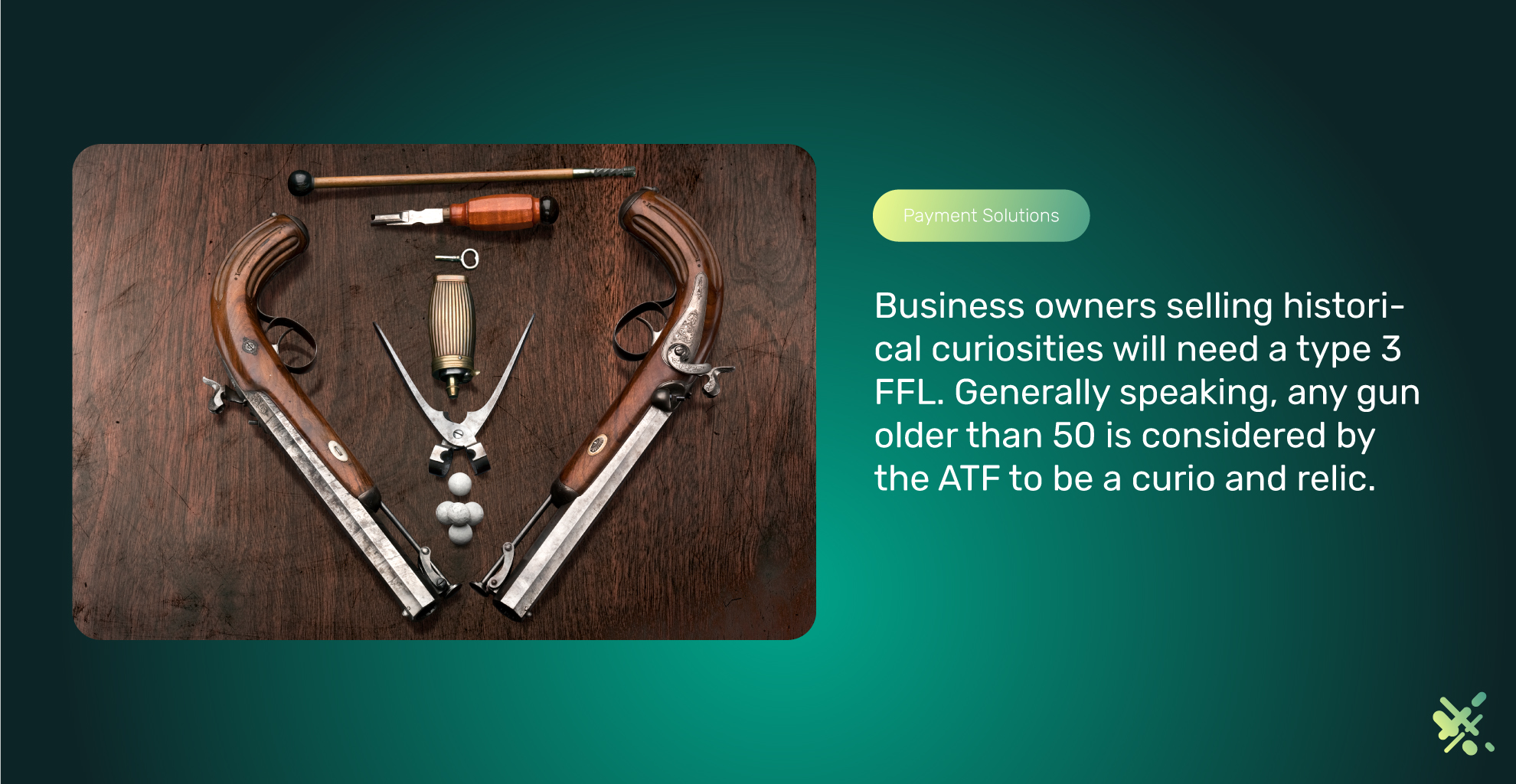
Collector of Curios and Relics
Business owners selling historical curiosities will need a type 3 FFL. Generally speaking, any gun older than 50 is considered by the ATF to be a curio and relic (something inspiring curiosity). Certain exceptions may apply to guns that are not 50 years of age. And (as mentioned above) guns from before 1898 don’t typically need an FFL.
Now for the bad news: You cannot sell or repair guns as a business with a type 3 FFL. This type of FFL is only for assembling a collection of antique or curio guns. What it does is allow the FFL-holder to purchase guns without being subjected to additional background checks every time.
Think of it as a license for historical collectors to acquire collectible firearms more easily. Also, keep in mind that some states and/or cities with strict gun laws may still subject you to background checks to purchase additional firearms, especially certain types. The cost for this type of license is very low: just $30 and $30 to renew every three years.
Manufacturer of Ammunitions
The type 6 FFL is for those who want to manufacture and/or buy and sell ammo. Note that this type of FFL does not allow you to sell guns. Also, note that you cannot sell armor-piercing ammunition; this type of FFL is only for selling small-arms ammunition. Specialty hunting and defense ammo are included. The cost of this FFL is $30 and a $30 renewal every three years.
Manufacturer of Firearms and Ammunition
The most comprehensive FFL to obtain is the type 7 FFL. Type 7 FFL covers everything a type 1 FFL does: buying, selling, and repairing firearms. It also covers the manufacture of guns and ammo.
Adding a class 3 SOT to this license also allows you to manufacture NFA guns and accessories like a machine gun or a silencer. Note that manufacturing NFA firearms will require registering with the ITAR (International Traffic in Arms Regulations). However, you do not need to register with ITAR or pay the extra fee if you are not producing NFA guns or accessories.
And yet, many arms manufacturers and dealers may find financial benefits in doing so. Silencer ownership has been growing in popularity, along with shotguns and short-barrel rifles. The AR-15, in particular, has become the most popular rifle on the consumer market. With the wide availability of AR-15 parts, gun dealers can manufacture custom rifles for sale.
This means that the type 7 FFL is often the best bet for gun dealers, especially when augmented by the class 3 SOT. It is arguably the most comprehensive type of FFL and covers most types of retailing. The cost of a type 7 FFL is $150, and $150 to renew every three years.
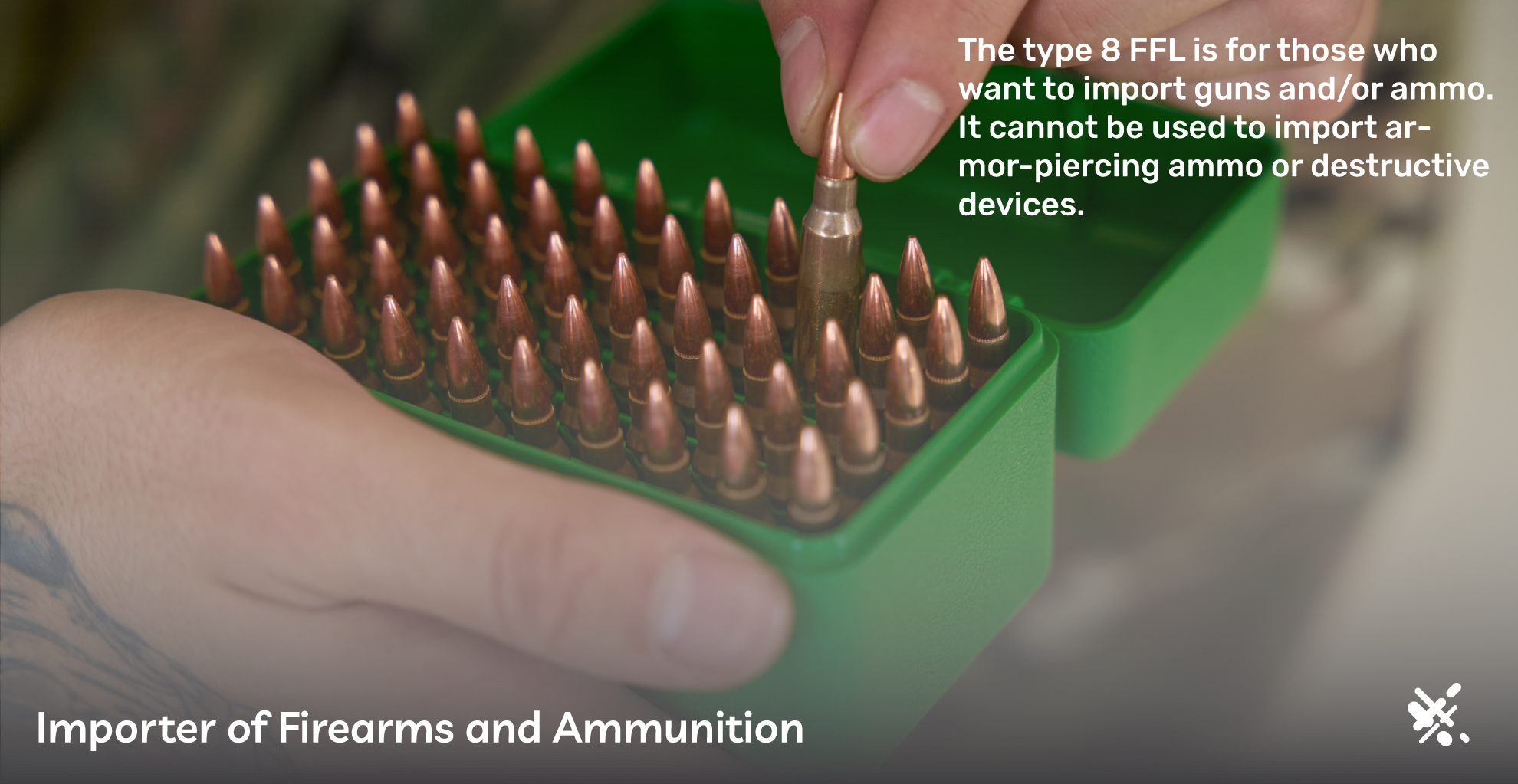
Importer of Firearms and Ammunition
The type 8 FFL is for those who want to import guns and/or ammo. It cannot be used to import armor-piercing ammo or destructive devices (e.g., grenades, artillery, and firearms with a bore over 0.50 inches).
Type 8 is the right FFL for those importing firearms from overseas, such as those made by Glock, Sig Sauer, Heckler & Koch, and others. Yes, some of these companies produce arms in the United States, but importers may still want the ones made overseas.
Those interested in this business model need to know that there are going to be other types of customs paperwork involved in importing firearms. This type of licensure costs $150 to obtain and $150 to renew every three years.
Dealer in Destructive Devices
The type 9 FFL is one of the more exciting licenses. Type 9 FFL allows you to buy and sell guns with a bore over 0.50 inches, grenades, artillery, certain types of semi-automatic shotguns, and select exploding forms of ammo. All such “destructive devices” must be registered and require a $200 tax stamp to own.
Destructive devices, or DDs, are actually legal for private ownership in most states. They are not in Delaware, Iowa, New Jersey, or Rhode Island. In California, one can own C&R DDs (curio and relic destructive devices).
However, sometimes, the ammo that goes into such a device is itself considered a DD. For instance, while you can own a cannon, you cannot own a cannonball…which really puts a damper on a pirate’s night out.
In states where destructive devices are not legal for private ownership, only law enforcement, military contractors, and government agencies, there is still a B2B market for dealers in DDs. However, the cost of licenses is steeper: $3,000 to apply and a $3,000 renewal every three years.
Manufacturer of Destructive Devices and Ammunition
The full name for the type 10 FFL is Manufacturer of Destructive Devices, Ammunition for Destructive Devices, or Armor Piercing Ammunition. Type 10 is the FFL you will need to make destructive devices (again, like artillery, grenades, or guns with bores over 0.50).
Type 10 FFL is also the license you’ll need to restore or repair antique military equipment. The cost is also $3,000 and costs $3,000 to renew every three years. While private ownership of DDS is permissible in most states, it is likely that the most lucrative business model for this type of license holder is B2B—that is, sales to government agencies and law enforcement.
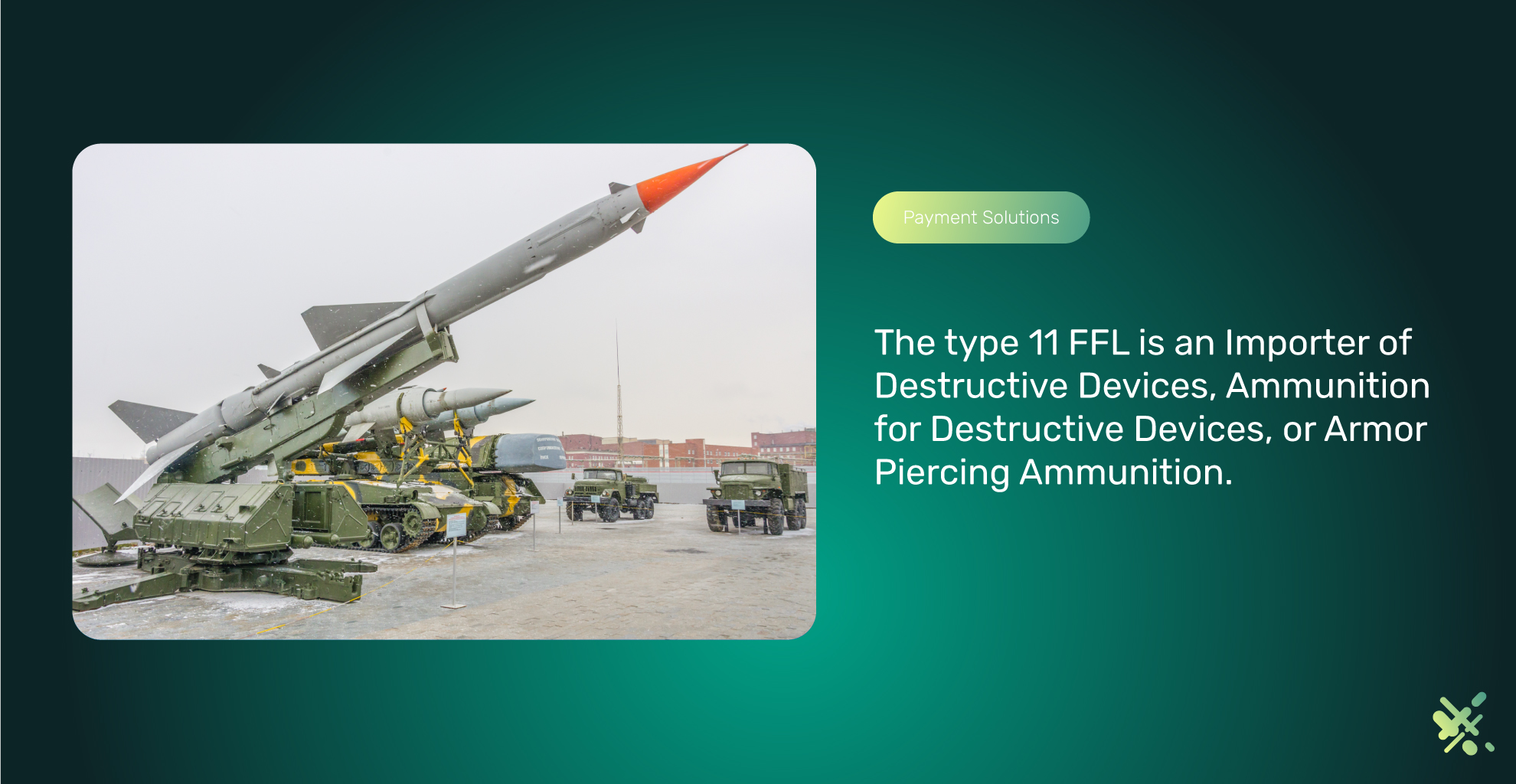
Importer of Destructive Devices and Ammunition
The type 11 FFL is an Importer of Destructive Devices, Ammunition for Destructive Devices, or Armor Piercing Ammunition (in contrast to a manufacturer). At the same time, the cost for this FFL is the same as type 9 and type 10. Type 11 has many other restrictions and limitations.
It is only lucrative for businesses facilitating the private collection of military equipment for museums or wealthy private collectors. It may also be lucrative for importers working with government agencies and law enforcement.
FFL License Types By State
There are different FFL license types. What type of FFL makes sense varies from state to state. You cannot sell suppressors in California, but you could sell and/or refurbish destructive devices that are curios and relics. You can sell short-range barrel shotguns in Delaware but not in the city limits of Wilmington. There is no reason to get an FFL for products you can’t sell.
States may have their own laws, rules, and regulations around buying, selling, and making guns and ammunition. There is a whole gradient of gun-friendly states. Based on the number of firearms industry jobs, the wages and/or salaries of those in the industry, guns per capita, and, of course, gun laws, Arizona is regarded as the friendliest state for 2A enthusiasts, while the least friendly is Delaware.
Getting an FFL in each state will differ based on how strict that state is about guns and gun sales. So, setting aside state cultures and legislation, let’s look at the different types of FFL options for the sale, manufacture, and distribution of firearms, ammo, and destructive devices.
In Which States Is It The Easiest To Get A Federal Firearms License?
There are more than 133,700 FFLs across the United States. The states with the most FFLs include Texas (11,164), California (8,878), and Florida (7,285). Arizona, Colorado, Illinois, Georgia, Massachusetts, Michigan, North Carolina, New York, Ohio, Pennsylvania, Tennessee, and Washington State each have more than 3,000.
One might think that the number of FFLS in a state indicates overall market sentiment about guns and gun culture and that legislation might reflect these sentiments. And one is partially correct in making this assumption.
While the FFL is a federal license, one has to meet state requirements and laws to get an FFL. Some states just have friendlier gun laws than others. It can be hard to feel that out by the number of FFLs alone.
What Are the Most Popular Federal Firearms License Types?
More than 52,971 type 1 FFLs nationwide (dealers and gunsmiths) exist. There are 7,987 type 2s (pawnbrokers), which is particularly interesting as there are 12,397 pawn shops across the United States—meaning that over 57% of pawn shops do take firearms as collateral.
Moving on, there are 1,841 type 6 FFLs (manufacture of ammo), 14,661 type 7 FFLs (manufacture of firearms and ammo), and 1,190 type 8 FFLs (importer of arms and ammo). There are only 127 FFL type 9s (dealers in destructive devices), 430 type 10s (manufacturers of DD), and 272 type 11s (importers of DD).
The exact number of type 3 FFL holders is harder to track down. Remember that type 3 is not about buying and selling arms or ammo but rather purchasing antique curios and relic firearms for personal collection.
These numbers tell you that the most common FFL is the one for dealing in arms and repairing them, with no license to manufacture or import. The least common FFLs are those for manufacturing, dealing in, and/or importing destructive devices.
How To Get A FFL Wrap-Up
We’ve discussed what a Federal Firearms License is, why it exists, and the different types of FFL for gun stores. We also outlined in broad strokes the process of getting an FFL. One last word: while putting all your regulatory ducks in a row, don’t forget about other business aspects.
There is inventory management, accounting, HR compliance, and payment processing. To learn how you can manage all these things in one simple gun store POS software, contact us or fill out the form below.
